Make Up For Ever Silver & Gray Artist Color Shadows Reviews, Photos, Swatches
ME122 Snow
Make Up For Ever ME122 Snow Artist Color Shadow ($17.00 for 0.08 oz.) is a bright white with neutral-to-cool undertones and a metallic finish. It had good color payoff in a single layer, which was buildable to full coverage with a second layer on top. The consistency was soft, smooth, and dense but not stiff or difficult to pickup with a brush. The eyeshadow blended out nicely and stayed on well for nine hours on me.
The new version is less shimmery (see side-by-side comparison).
FURTHER READING: Formula Overview for details on general performance and characteristics (like scent).
Top Dupes
- ColourPop Baddie (LE, $4.50) is less shimmery, cooler (95% similar).
- BH Cosmetics Foil Eyes #1 (PiP, ) is brighter (95% similar).
- Chanel Modern Glamour #2 (PiP, ) is less shimmery (95% similar).
- LORAC Snow (LE, $19.00) is darker, warmer (95% similar).
- Make Up For Ever ME122 Snow (DC, $21.00) is more shimmery, darker (95% similar).
- NARS Silver Screen #4 (PiP, $19.00) is less shimmery, warmer (95% similar).
- NARS Mortal (DC, $25.00) is more shimmery, darker, warmer (95% similar).
- Dior Lune (001) (P, $31.00) is less shimmery (95% similar).
- ColourPop Like a Rockstar (PiP, $4.50) is more shimmery, warmer (95% similar).
- MAC 2x Dare #1 (LE, ) is more shimmery (95% similar).
Formula Overview
$17.00/0.08 oz. - $212.50 Per Ounce
The original Artist Shadow formula had a creamier, slightly softer, and thicker feel for finishes like Metallic, Iridescent, and Satin, while I felt the original Diamond finish was denser/thicker (heavier almost) and the Matte finish was more powdery but similar in softness and pigmentation (I did not find the original Mattes to be ultra pigmented across the board--semi-opaque to opaque, buildable, which you can see in my original swatches here). By and large, I found the formula to be easy to work with and did not have to spend a lot of time blending or fussing with the shades on the lid.
The new Matte formula has a smoother consistency that has more slip to the touch with less powderiness in the pan, but the pigmentation did seem slightly weaker on average compared to the original formula. The pigmentation of the new Matte formula was still semi-opaque to opaque and buildable but I felt like there were just more shades that were closer to semi-opaque than to opaque.
However, shades like M402 Mimosa showed improvement, as it used to be a Satin (see here) and not as easy to work with due to the denser texture. A lot of the shades were similar in color between the formulas, but there were a few that were not (M546 Dark Purple Taupe was a shade with more significant changes; the new version is warmer and lighter).
Overall, I did not have any issues applying most of the matte shades to the lid, blending them out, or building up coverage. They lasted between nine and ten hours on me, which was actually a bit longer (on average) compared to the original formula, where the mattes tended to wear between seven and eight hours on me (without primer).
The new Satin formula was the most different; it had weaker pigmentation, felt denser and drier with less give and creaminess. In practice, I did not feel like application was harder or noticeably different other than feeling like more of the shades required two layers for more opaque coverage, though some of the more neutral shades were fairly pigmented in a single layer. I also noticed that this particular finish seemed to be the most culled; there weren't that many shades in it, and I wonder if they did not sell well or something about the finish is harder to produce.
There were significant differences in color (and/or undertone) between shades in the new formula and old formula (with the same names) within this finish, too, where most were different rather than only a handful being different. The pigmentation of the new Satin formula was typically semi-opaque and buildable, while they applied evenly, blended out without much effort, and lasted between eight and ten hours (without primer).
The new Iridescent formula was the second most different and more comparable to the Satin finish in terms of overall feel and performance, just with larger shimmer/micro-sparkle. The new formula has a denser consistency (almost "drier" and with less slip) and didn't feel as cream-like, but the powder seemed to pickup better with most brushes and was more consistent in the actual finish--pearly with sparkle--whereas the original formula varied more heavily between pearly and metallic, sparkle and finer shimmer.
There were, however, more substantial color and undertone differences between old and new within this formula, like I saw with the Satin formula. Overall, I did not experience any significant issues applying most of the shades to the lid--they were semi-opaque to opaque, fairly buildable, blendable, and long-wearing (eight to ten hours).
The new Metallic formula was the most consistent between old and new for overall feel, performance, and color. There were, of course, a few shades that seemed lighter/darker, cooler/warmer compared to the previous versions, and all those notes will be made within the respective shade's review. I think the new Metallic finish has a more flattering look on the lid, as the consistency wasn't quite as thick, which should make it apply and appear smoother on the lid for more people.
There were several shades that seemed slightly deeper or less reflective, while others were as reflective as past versions. The majority of the shades of this finish were very pigmented with a moderately dense, lightly creamy texture that blended out well on the lid and wore between nine and ten hours on me.
The new Diamond finish was noticeably less dense/thick, particularly on the lid, which did make it easier to spread across a larger area and easier to pickup with more types of brushes. I was worried that there would be more fallout, but I haven't noticeable much fallout with the new Diamond shades over the eight to ten hours they last for.
Most of them had good pigmentation, though there were a few that were weaker (medium to semi-opaque coverage); a shade like D410 Gold Nugget was a weaker shade before and still is while D326 Lagoon Blue is significantly less pigmented in the new formula.
As I typically do with new eyeshadow formulas, I tested a few shades from each finish over various primers, as I like to see how new formulas interact with different types of primers and if there are any unexpected consequences of using primers (I felt that some of the more silicone-heavy Artist Shadows from before actually applied better without primer).
I didn't notice any ill effects of using primers like Smashbox 24-Hour, Marc Jacobs Coconut Eye Primer, Too Faced Shadow Insurance, or Urban Decay Primer Potion. They all seemed to just help with wear, and with some of the shades that felt drier or had weaker pigmentation, the use of primer seemed to improve initial coverage levels, too.
Browse all of our Make Up For Ever Artist Color Shadow swatches.
Ingredients
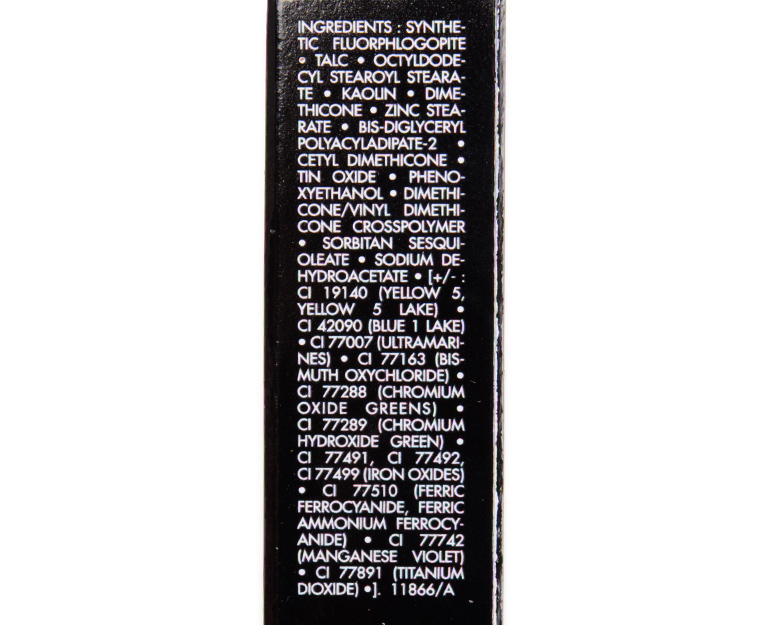
ME122 Snow
PPermanent. $17.00.
ME202 Iceberg Blue
Make Up For Ever ME202 Iceberg Blue Artist Color Shadow ($17.00 for 0.08 oz.) is a pale, bluish silver with cool undertones and a sparkling, metallic finish. It had semi-opaque pigmentation that applied fairly evenly to bare skin, but it had larger sparkle and was harder to build up without using a dampened brush or primer underneath it. The consistency was a touch drier compared to other Metallic shades in the range, but it blended out fairly well. It lasted for nine and a half hours on me before fading noticeably but had some fallout over time.
The new version is darker and less metallic (see side-by-side comparison).
FURTHER READING: Formula Overview for details on general performance and characteristics (like scent).
Top Dupes
- MAC Dark Energy #2 (LE, $21.00) is less shimmery (95% similar).
- Dior Blue Garden #3 (LE, ) is less shimmery (95% similar).
- ColourPop A Dream is a Wish Your Heart Makes (LE, $6.00) is lighter (95% similar).
- Le Metier de Beaute Platinum (P, $30.00) is cooler (90% similar).
- Dior Blue Beat #3 (LE, ) is less shimmery, cooler (90% similar).
- Giorgio Armani #12 (DC, $33.00) is darker (90% similar).
- Disney by Sephora Your Voice (LE, ) is less shimmery (90% similar).
- ColourPop Bassline (P, $4.50) is less shimmery, darker (90% similar).
- Dior Parisian Sky #4 (LE, ) is warmer (90% similar).
- Sephora Cassette (LE, ) is darker, brighter (90% similar).
Formula Overview
$17.00/0.08 oz. - $212.50 Per Ounce
The original Artist Shadow formula had a creamier, slightly softer, and thicker feel for finishes like Metallic, Iridescent, and Satin, while I felt the original Diamond finish was denser/thicker (heavier almost) and the Matte finish was more powdery but similar in softness and pigmentation (I did not find the original Mattes to be ultra pigmented across the board--semi-opaque to opaque, buildable, which you can see in my original swatches here). By and large, I found the formula to be easy to work with and did not have to spend a lot of time blending or fussing with the shades on the lid.
The new Matte formula has a smoother consistency that has more slip to the touch with less powderiness in the pan, but the pigmentation did seem slightly weaker on average compared to the original formula. The pigmentation of the new Matte formula was still semi-opaque to opaque and buildable but I felt like there were just more shades that were closer to semi-opaque than to opaque.
However, shades like M402 Mimosa showed improvement, as it used to be a Satin (see here) and not as easy to work with due to the denser texture. A lot of the shades were similar in color between the formulas, but there were a few that were not (M546 Dark Purple Taupe was a shade with more significant changes; the new version is warmer and lighter).
Overall, I did not have any issues applying most of the matte shades to the lid, blending them out, or building up coverage. They lasted between nine and ten hours on me, which was actually a bit longer (on average) compared to the original formula, where the mattes tended to wear between seven and eight hours on me (without primer).
The new Satin formula was the most different; it had weaker pigmentation, felt denser and drier with less give and creaminess. In practice, I did not feel like application was harder or noticeably different other than feeling like more of the shades required two layers for more opaque coverage, though some of the more neutral shades were fairly pigmented in a single layer. I also noticed that this particular finish seemed to be the most culled; there weren't that many shades in it, and I wonder if they did not sell well or something about the finish is harder to produce.
There were significant differences in color (and/or undertone) between shades in the new formula and old formula (with the same names) within this finish, too, where most were different rather than only a handful being different. The pigmentation of the new Satin formula was typically semi-opaque and buildable, while they applied evenly, blended out without much effort, and lasted between eight and ten hours (without primer).
The new Iridescent formula was the second most different and more comparable to the Satin finish in terms of overall feel and performance, just with larger shimmer/micro-sparkle. The new formula has a denser consistency (almost "drier" and with less slip) and didn't feel as cream-like, but the powder seemed to pickup better with most brushes and was more consistent in the actual finish--pearly with sparkle--whereas the original formula varied more heavily between pearly and metallic, sparkle and finer shimmer.
There were, however, more substantial color and undertone differences between old and new within this formula, like I saw with the Satin formula. Overall, I did not experience any significant issues applying most of the shades to the lid--they were semi-opaque to opaque, fairly buildable, blendable, and long-wearing (eight to ten hours).
The new Metallic formula was the most consistent between old and new for overall feel, performance, and color. There were, of course, a few shades that seemed lighter/darker, cooler/warmer compared to the previous versions, and all those notes will be made within the respective shade's review. I think the new Metallic finish has a more flattering look on the lid, as the consistency wasn't quite as thick, which should make it apply and appear smoother on the lid for more people.
There were several shades that seemed slightly deeper or less reflective, while others were as reflective as past versions. The majority of the shades of this finish were very pigmented with a moderately dense, lightly creamy texture that blended out well on the lid and wore between nine and ten hours on me.
The new Diamond finish was noticeably less dense/thick, particularly on the lid, which did make it easier to spread across a larger area and easier to pickup with more types of brushes. I was worried that there would be more fallout, but I haven't noticeable much fallout with the new Diamond shades over the eight to ten hours they last for.
Most of them had good pigmentation, though there were a few that were weaker (medium to semi-opaque coverage); a shade like D410 Gold Nugget was a weaker shade before and still is while D326 Lagoon Blue is significantly less pigmented in the new formula.
As I typically do with new eyeshadow formulas, I tested a few shades from each finish over various primers, as I like to see how new formulas interact with different types of primers and if there are any unexpected consequences of using primers (I felt that some of the more silicone-heavy Artist Shadows from before actually applied better without primer).
I didn't notice any ill effects of using primers like Smashbox 24-Hour, Marc Jacobs Coconut Eye Primer, Too Faced Shadow Insurance, or Urban Decay Primer Potion. They all seemed to just help with wear, and with some of the shades that felt drier or had weaker pigmentation, the use of primer seemed to improve initial coverage levels, too.
Browse all of our Make Up For Ever Artist Color Shadow swatches.
Ingredients
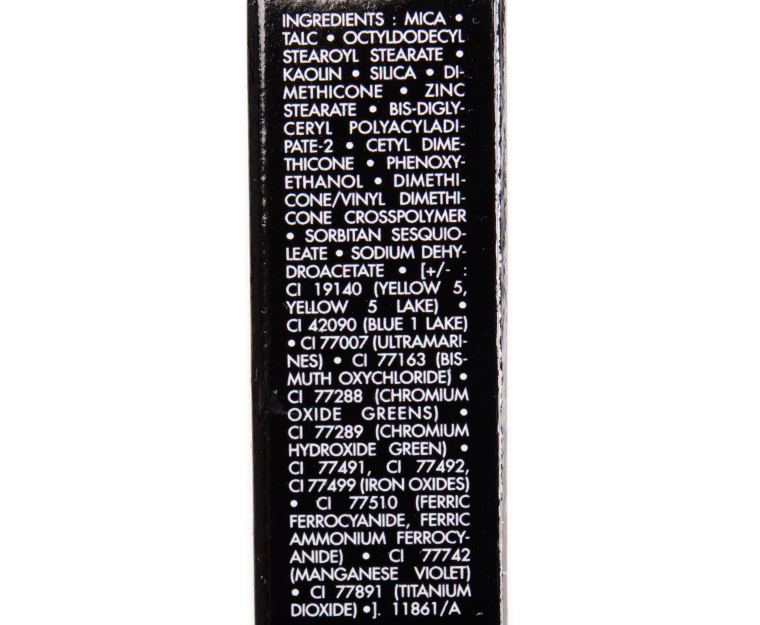
ME202 Iceberg Blue
DCDiscontinued. $17.00.
ME108 Steel
Make Up For Ever ME108 Steel Artist Color Shadow ($17.00 for 0.08 oz.) is a medium-dark gray with cooler undertones and a metallic finish. The texture was denser and a bit drier, which resulted in more ragged edges when it came time to diffuse and blend the eyeshadow out on my lid. It had good color payoff but definitely required a heavier hand and flat, synthetic brushes for best results. It wore well for nine and a half hours before fading slightly on me.
The new version is darker and more neutral than blue/cool-toned (see side-by-side comparison).
FURTHER READING: Formula Overview for details on general performance and characteristics (like scent).
Top Dupes
- MAC Stars Align (LE, $25.00) is less shimmery, lighter (95% similar).
- Laura Mercier Gunmetal (LE, $23.00) is less shimmery, cooler (95% similar).
- Stila Vivid Labradorite (P, $24.00) is lighter (95% similar).
- NARS Indes Galantes (Left) (DC, $25.00) is darker (90% similar).
- Tom Ford Beauty Badass #3 (LE, ) is more shimmery, darker (90% similar).
- NARS Bad Behaviour (DC, $25.00) is lighter (90% similar).
- NARS Titania (LE, $29.00) is warmer (90% similar).
- Makeup Geek Galaxy (DC, $6.00) is warmer (90% similar).
- Urban Decay Drift (PiP, $19.00) is more shimmery, darker (90% similar).
- Buxom Cool Caviar (P, $12.00) is lighter (90% similar).
Formula Overview
$17.00/0.08 oz. - $212.50 Per Ounce
The original Artist Shadow formula had a creamier, slightly softer, and thicker feel for finishes like Metallic, Iridescent, and Satin, while I felt the original Diamond finish was denser/thicker (heavier almost) and the Matte finish was more powdery but similar in softness and pigmentation (I did not find the original Mattes to be ultra pigmented across the board--semi-opaque to opaque, buildable, which you can see in my original swatches here). By and large, I found the formula to be easy to work with and did not have to spend a lot of time blending or fussing with the shades on the lid.
The new Matte formula has a smoother consistency that has more slip to the touch with less powderiness in the pan, but the pigmentation did seem slightly weaker on average compared to the original formula. The pigmentation of the new Matte formula was still semi-opaque to opaque and buildable but I felt like there were just more shades that were closer to semi-opaque than to opaque.
However, shades like M402 Mimosa showed improvement, as it used to be a Satin (see here) and not as easy to work with due to the denser texture. A lot of the shades were similar in color between the formulas, but there were a few that were not (M546 Dark Purple Taupe was a shade with more significant changes; the new version is warmer and lighter).
Overall, I did not have any issues applying most of the matte shades to the lid, blending them out, or building up coverage. They lasted between nine and ten hours on me, which was actually a bit longer (on average) compared to the original formula, where the mattes tended to wear between seven and eight hours on me (without primer).
The new Satin formula was the most different; it had weaker pigmentation, felt denser and drier with less give and creaminess. In practice, I did not feel like application was harder or noticeably different other than feeling like more of the shades required two layers for more opaque coverage, though some of the more neutral shades were fairly pigmented in a single layer. I also noticed that this particular finish seemed to be the most culled; there weren't that many shades in it, and I wonder if they did not sell well or something about the finish is harder to produce.
There were significant differences in color (and/or undertone) between shades in the new formula and old formula (with the same names) within this finish, too, where most were different rather than only a handful being different. The pigmentation of the new Satin formula was typically semi-opaque and buildable, while they applied evenly, blended out without much effort, and lasted between eight and ten hours (without primer).
The new Iridescent formula was the second most different and more comparable to the Satin finish in terms of overall feel and performance, just with larger shimmer/micro-sparkle. The new formula has a denser consistency (almost "drier" and with less slip) and didn't feel as cream-like, but the powder seemed to pickup better with most brushes and was more consistent in the actual finish--pearly with sparkle--whereas the original formula varied more heavily between pearly and metallic, sparkle and finer shimmer.
There were, however, more substantial color and undertone differences between old and new within this formula, like I saw with the Satin formula. Overall, I did not experience any significant issues applying most of the shades to the lid--they were semi-opaque to opaque, fairly buildable, blendable, and long-wearing (eight to ten hours).
The new Metallic formula was the most consistent between old and new for overall feel, performance, and color. There were, of course, a few shades that seemed lighter/darker, cooler/warmer compared to the previous versions, and all those notes will be made within the respective shade's review. I think the new Metallic finish has a more flattering look on the lid, as the consistency wasn't quite as thick, which should make it apply and appear smoother on the lid for more people.
There were several shades that seemed slightly deeper or less reflective, while others were as reflective as past versions. The majority of the shades of this finish were very pigmented with a moderately dense, lightly creamy texture that blended out well on the lid and wore between nine and ten hours on me.
The new Diamond finish was noticeably less dense/thick, particularly on the lid, which did make it easier to spread across a larger area and easier to pickup with more types of brushes. I was worried that there would be more fallout, but I haven't noticeable much fallout with the new Diamond shades over the eight to ten hours they last for.
Most of them had good pigmentation, though there were a few that were weaker (medium to semi-opaque coverage); a shade like D410 Gold Nugget was a weaker shade before and still is while D326 Lagoon Blue is significantly less pigmented in the new formula.
As I typically do with new eyeshadow formulas, I tested a few shades from each finish over various primers, as I like to see how new formulas interact with different types of primers and if there are any unexpected consequences of using primers (I felt that some of the more silicone-heavy Artist Shadows from before actually applied better without primer).
I didn't notice any ill effects of using primers like Smashbox 24-Hour, Marc Jacobs Coconut Eye Primer, Too Faced Shadow Insurance, or Urban Decay Primer Potion. They all seemed to just help with wear, and with some of the shades that felt drier or had weaker pigmentation, the use of primer seemed to improve initial coverage levels, too.
Browse all of our Make Up For Ever Artist Color Shadow swatches.
Ingredients
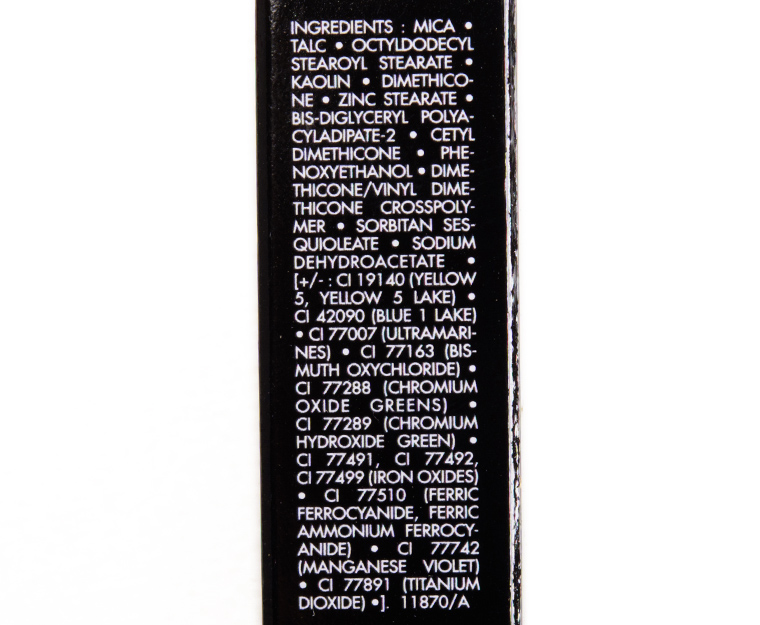
ME108 Steel
PPermanent. $17.00.
M106 Slate
Make Up For Ever M106 Slate Artist Color Shadow ($17.00 for 0.08 oz.) is a deep, bluish gray with a matte finish. The eyeshadow had a soft, lightly powdery consistency in the pan that had felt velvety to the touch. It had medium coverage but was buildable, which I think made it easier to work with as it blended out without a lot of effort, but some will want greater pigmentation without the effort. This shade wore well for nine hours on me.
The original version wasn’t quite as cool-toned and looked lighter but wasn’t particularly pigmented either (see side-by-side comparison).
FURTHER READING: Formula Overview for details on general performance and characteristics (like scent).
Top Dupes
- Pat McGrath La Vie en Noir (LE, $25.00) is darker (95% similar).
- NARS L'Amour, Toujours L'Amour #4 (DC, $25.00) is darker (95% similar).
- Melt Cosmetics Panteon (PiP, ) is darker (95% similar).
- MAC Cast Iron (LE, $17.00) is cooler (95% similar).
- MAC Bad Influence (LE, ) is darker (95% similar).
- MAC Soot (DC, $17.00) is warmer (90% similar).
- Pretty Vulgar After Midnight (PiP, ) is warmer (90% similar).
- KVD Beauty Smoke (Define) (PiP, ) is darker, cooler (90% similar).
- MAC Russian Blue (LE, $17.00) is darker (90% similar).
- MAC Nehru (DC, $17.00) is darker, cooler (90% similar).
Formula Overview
$17.00/0.08 oz. - $212.50 Per Ounce
The original Artist Shadow formula had a creamier, slightly softer, and thicker feel for finishes like Metallic, Iridescent, and Satin, while I felt the original Diamond finish was denser/thicker (heavier almost) and the Matte finish was more powdery but similar in softness and pigmentation (I did not find the original Mattes to be ultra pigmented across the board--semi-opaque to opaque, buildable, which you can see in my original swatches here). By and large, I found the formula to be easy to work with and did not have to spend a lot of time blending or fussing with the shades on the lid.
The new Matte formula has a smoother consistency that has more slip to the touch with less powderiness in the pan, but the pigmentation did seem slightly weaker on average compared to the original formula. The pigmentation of the new Matte formula was still semi-opaque to opaque and buildable but I felt like there were just more shades that were closer to semi-opaque than to opaque.
However, shades like M402 Mimosa showed improvement, as it used to be a Satin (see here) and not as easy to work with due to the denser texture. A lot of the shades were similar in color between the formulas, but there were a few that were not (M546 Dark Purple Taupe was a shade with more significant changes; the new version is warmer and lighter).
Overall, I did not have any issues applying most of the matte shades to the lid, blending them out, or building up coverage. They lasted between nine and ten hours on me, which was actually a bit longer (on average) compared to the original formula, where the mattes tended to wear between seven and eight hours on me (without primer).
The new Satin formula was the most different; it had weaker pigmentation, felt denser and drier with less give and creaminess. In practice, I did not feel like application was harder or noticeably different other than feeling like more of the shades required two layers for more opaque coverage, though some of the more neutral shades were fairly pigmented in a single layer. I also noticed that this particular finish seemed to be the most culled; there weren't that many shades in it, and I wonder if they did not sell well or something about the finish is harder to produce.
There were significant differences in color (and/or undertone) between shades in the new formula and old formula (with the same names) within this finish, too, where most were different rather than only a handful being different. The pigmentation of the new Satin formula was typically semi-opaque and buildable, while they applied evenly, blended out without much effort, and lasted between eight and ten hours (without primer).
The new Iridescent formula was the second most different and more comparable to the Satin finish in terms of overall feel and performance, just with larger shimmer/micro-sparkle. The new formula has a denser consistency (almost "drier" and with less slip) and didn't feel as cream-like, but the powder seemed to pickup better with most brushes and was more consistent in the actual finish--pearly with sparkle--whereas the original formula varied more heavily between pearly and metallic, sparkle and finer shimmer.
There were, however, more substantial color and undertone differences between old and new within this formula, like I saw with the Satin formula. Overall, I did not experience any significant issues applying most of the shades to the lid--they were semi-opaque to opaque, fairly buildable, blendable, and long-wearing (eight to ten hours).
The new Metallic formula was the most consistent between old and new for overall feel, performance, and color. There were, of course, a few shades that seemed lighter/darker, cooler/warmer compared to the previous versions, and all those notes will be made within the respective shade's review. I think the new Metallic finish has a more flattering look on the lid, as the consistency wasn't quite as thick, which should make it apply and appear smoother on the lid for more people.
There were several shades that seemed slightly deeper or less reflective, while others were as reflective as past versions. The majority of the shades of this finish were very pigmented with a moderately dense, lightly creamy texture that blended out well on the lid and wore between nine and ten hours on me.
The new Diamond finish was noticeably less dense/thick, particularly on the lid, which did make it easier to spread across a larger area and easier to pickup with more types of brushes. I was worried that there would be more fallout, but I haven't noticeable much fallout with the new Diamond shades over the eight to ten hours they last for.
Most of them had good pigmentation, though there were a few that were weaker (medium to semi-opaque coverage); a shade like D410 Gold Nugget was a weaker shade before and still is while D326 Lagoon Blue is significantly less pigmented in the new formula.
As I typically do with new eyeshadow formulas, I tested a few shades from each finish over various primers, as I like to see how new formulas interact with different types of primers and if there are any unexpected consequences of using primers (I felt that some of the more silicone-heavy Artist Shadows from before actually applied better without primer).
I didn't notice any ill effects of using primers like Smashbox 24-Hour, Marc Jacobs Coconut Eye Primer, Too Faced Shadow Insurance, or Urban Decay Primer Potion. They all seemed to just help with wear, and with some of the shades that felt drier or had weaker pigmentation, the use of primer seemed to improve initial coverage levels, too.
Browse all of our Make Up For Ever Artist Color Shadow swatches.
Ingredients

M106 Slate
PPermanent. $17.00.
M226 Abyssal Blue
Make Up For Ever M226 Abyssal Blue Artist Color Shadow ($17.00 for 0.08 oz.) is a muted, medium-dark blue with cool undertones and a matte finish. It had semi-opaque, buildable pigmentation that applied fairly evenly to bare skin and blended out easily. Over time, I have found that I prefer more buildable, deeper matte shades like this, but it’s certainly not advertised that way. The texture was smooth and velvety to the touch but was a little powdery when I used it. The color stayed on well for nine and a half hours on me.
The new version is completely different–it used to be a satin finish and was a teal, not a straight-up blue hue (see side-by-side comparison).
FURTHER READING: Formula Overview for details on general performance and characteristics (like scent).
Top Dupes
- Juvia's Place Yejide (LE, ) is darker (90% similar).
- Coloured Raine Romance (LE, $6.99) is darker (90% similar).
- Viseart Sky (Cool Mattes 2 #7) (P, ) is lighter (90% similar).
- Zoeva MT120 (PiP, ) is more muted (90% similar).
- LORAC Denim (LE, $19.00) is lighter (90% similar).
- Sydney Grace Negril (PiP, $5.25) is warmer (90% similar).
- ColourPop True Blue (LE, $4.50) is lighter (85% similar).
- Chanel Architectonic #1 (LE, ) is darker (85% similar).
- NYX Leather and Studs (P, $4.50) is warmer (85% similar).
- Estee Lauder Saphir (LE, ) is darker (85% similar).
Formula Overview
$17.00/0.08 oz. - $212.50 Per Ounce
The original Artist Shadow formula had a creamier, slightly softer, and thicker feel for finishes like Metallic, Iridescent, and Satin, while I felt the original Diamond finish was denser/thicker (heavier almost) and the Matte finish was more powdery but similar in softness and pigmentation (I did not find the original Mattes to be ultra pigmented across the board--semi-opaque to opaque, buildable, which you can see in my original swatches here). By and large, I found the formula to be easy to work with and did not have to spend a lot of time blending or fussing with the shades on the lid.
The new Matte formula has a smoother consistency that has more slip to the touch with less powderiness in the pan, but the pigmentation did seem slightly weaker on average compared to the original formula. The pigmentation of the new Matte formula was still semi-opaque to opaque and buildable but I felt like there were just more shades that were closer to semi-opaque than to opaque.
However, shades like M402 Mimosa showed improvement, as it used to be a Satin (see here) and not as easy to work with due to the denser texture. A lot of the shades were similar in color between the formulas, but there were a few that were not (M546 Dark Purple Taupe was a shade with more significant changes; the new version is warmer and lighter).
Overall, I did not have any issues applying most of the matte shades to the lid, blending them out, or building up coverage. They lasted between nine and ten hours on me, which was actually a bit longer (on average) compared to the original formula, where the mattes tended to wear between seven and eight hours on me (without primer).
The new Satin formula was the most different; it had weaker pigmentation, felt denser and drier with less give and creaminess. In practice, I did not feel like application was harder or noticeably different other than feeling like more of the shades required two layers for more opaque coverage, though some of the more neutral shades were fairly pigmented in a single layer. I also noticed that this particular finish seemed to be the most culled; there weren't that many shades in it, and I wonder if they did not sell well or something about the finish is harder to produce.
There were significant differences in color (and/or undertone) between shades in the new formula and old formula (with the same names) within this finish, too, where most were different rather than only a handful being different. The pigmentation of the new Satin formula was typically semi-opaque and buildable, while they applied evenly, blended out without much effort, and lasted between eight and ten hours (without primer).
The new Iridescent formula was the second most different and more comparable to the Satin finish in terms of overall feel and performance, just with larger shimmer/micro-sparkle. The new formula has a denser consistency (almost "drier" and with less slip) and didn't feel as cream-like, but the powder seemed to pickup better with most brushes and was more consistent in the actual finish--pearly with sparkle--whereas the original formula varied more heavily between pearly and metallic, sparkle and finer shimmer.
There were, however, more substantial color and undertone differences between old and new within this formula, like I saw with the Satin formula. Overall, I did not experience any significant issues applying most of the shades to the lid--they were semi-opaque to opaque, fairly buildable, blendable, and long-wearing (eight to ten hours).
The new Metallic formula was the most consistent between old and new for overall feel, performance, and color. There were, of course, a few shades that seemed lighter/darker, cooler/warmer compared to the previous versions, and all those notes will be made within the respective shade's review. I think the new Metallic finish has a more flattering look on the lid, as the consistency wasn't quite as thick, which should make it apply and appear smoother on the lid for more people.
There were several shades that seemed slightly deeper or less reflective, while others were as reflective as past versions. The majority of the shades of this finish were very pigmented with a moderately dense, lightly creamy texture that blended out well on the lid and wore between nine and ten hours on me.
The new Diamond finish was noticeably less dense/thick, particularly on the lid, which did make it easier to spread across a larger area and easier to pickup with more types of brushes. I was worried that there would be more fallout, but I haven't noticeable much fallout with the new Diamond shades over the eight to ten hours they last for.
Most of them had good pigmentation, though there were a few that were weaker (medium to semi-opaque coverage); a shade like D410 Gold Nugget was a weaker shade before and still is while D326 Lagoon Blue is significantly less pigmented in the new formula.
As I typically do with new eyeshadow formulas, I tested a few shades from each finish over various primers, as I like to see how new formulas interact with different types of primers and if there are any unexpected consequences of using primers (I felt that some of the more silicone-heavy Artist Shadows from before actually applied better without primer).
I didn't notice any ill effects of using primers like Smashbox 24-Hour, Marc Jacobs Coconut Eye Primer, Too Faced Shadow Insurance, or Urban Decay Primer Potion. They all seemed to just help with wear, and with some of the shades that felt drier or had weaker pigmentation, the use of primer seemed to improve initial coverage levels, too.
Browse all of our Make Up For Ever Artist Color Shadow swatches.
Ingredients
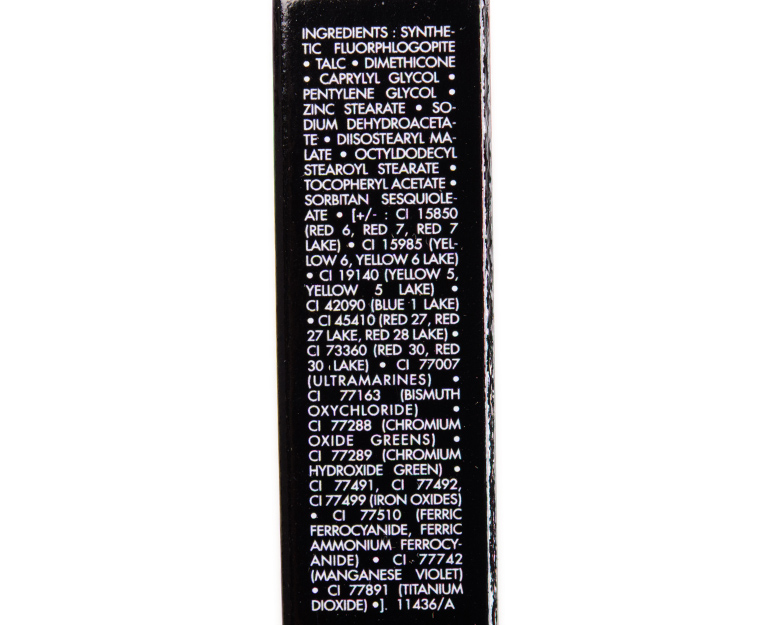
M226 Abyssal Blue
PPermanent. $17.00.
ME116 Silver
Make Up For Ever ME116 Silver Artist Color Shadow ($17.00 for 0.08 oz.) is a medium silver with subtle, neutral-to-cool undertones and a pearly sheen. The pigmentation was good, while the texture was smooth, lightly creamy, and moderately dense. It worked best with flat, synthetic brushes using a pushing and pulling method to dislodge product and to apply to the lid (again, common technique for denser, more silicone-heavy formulations in my experience). It applied evenly to my lid and blended out nicely. This shade wore well for nine and a half hours on me.
The new version is darker and less metallic (but has a smoother shine) (see side-by-side comparison).
FURTHER READING: Formula Overview for details on general performance and characteristics (like scent).
Top Dupes
- Too Faced Drippin' Diamonds (LE, $16.00) is darker (95% similar).
- Fenty Beauty Diamond Ball-Out (LE, $36.00) is more shimmery, darker (90% similar).
- Marc Jacobs Beauty In Doubt (PiP, ) is lighter (90% similar).
- Chanel Tisse Ombre de Lune #2 (PiP, ) is lighter (90% similar).
- Sephora Iridescent Shell (110) (LE, $13.00) is more shimmery, brighter (90% similar).
- Chanel Mysterio (102) (P, $32.00) is warmer (90% similar).
- MAC Silver Coin (LE, $22.00) is lighter, brighter (90% similar).
- Natasha Denona Chromatic (04M) (PiP, $29.00) is lighter, brighter (90% similar).
- BH Cosmetics Foil Eyes 2 #17 (PiP, ) is darker, more muted, cooler (90% similar).
- Sugarpill Grand Tiara (P, $13.00) is lighter, brighter (90% similar).
Formula Overview
$17.00/0.08 oz. - $212.50 Per Ounce
The original Artist Shadow formula had a creamier, slightly softer, and thicker feel for finishes like Metallic, Iridescent, and Satin, while I felt the original Diamond finish was denser/thicker (heavier almost) and the Matte finish was more powdery but similar in softness and pigmentation (I did not find the original Mattes to be ultra pigmented across the board--semi-opaque to opaque, buildable, which you can see in my original swatches here). By and large, I found the formula to be easy to work with and did not have to spend a lot of time blending or fussing with the shades on the lid.
The new Matte formula has a smoother consistency that has more slip to the touch with less powderiness in the pan, but the pigmentation did seem slightly weaker on average compared to the original formula. The pigmentation of the new Matte formula was still semi-opaque to opaque and buildable but I felt like there were just more shades that were closer to semi-opaque than to opaque.
However, shades like M402 Mimosa showed improvement, as it used to be a Satin (see here) and not as easy to work with due to the denser texture. A lot of the shades were similar in color between the formulas, but there were a few that were not (M546 Dark Purple Taupe was a shade with more significant changes; the new version is warmer and lighter).
Overall, I did not have any issues applying most of the matte shades to the lid, blending them out, or building up coverage. They lasted between nine and ten hours on me, which was actually a bit longer (on average) compared to the original formula, where the mattes tended to wear between seven and eight hours on me (without primer).
The new Satin formula was the most different; it had weaker pigmentation, felt denser and drier with less give and creaminess. In practice, I did not feel like application was harder or noticeably different other than feeling like more of the shades required two layers for more opaque coverage, though some of the more neutral shades were fairly pigmented in a single layer. I also noticed that this particular finish seemed to be the most culled; there weren't that many shades in it, and I wonder if they did not sell well or something about the finish is harder to produce.
There were significant differences in color (and/or undertone) between shades in the new formula and old formula (with the same names) within this finish, too, where most were different rather than only a handful being different. The pigmentation of the new Satin formula was typically semi-opaque and buildable, while they applied evenly, blended out without much effort, and lasted between eight and ten hours (without primer).
The new Iridescent formula was the second most different and more comparable to the Satin finish in terms of overall feel and performance, just with larger shimmer/micro-sparkle. The new formula has a denser consistency (almost "drier" and with less slip) and didn't feel as cream-like, but the powder seemed to pickup better with most brushes and was more consistent in the actual finish--pearly with sparkle--whereas the original formula varied more heavily between pearly and metallic, sparkle and finer shimmer.
There were, however, more substantial color and undertone differences between old and new within this formula, like I saw with the Satin formula. Overall, I did not experience any significant issues applying most of the shades to the lid--they were semi-opaque to opaque, fairly buildable, blendable, and long-wearing (eight to ten hours).
The new Metallic formula was the most consistent between old and new for overall feel, performance, and color. There were, of course, a few shades that seemed lighter/darker, cooler/warmer compared to the previous versions, and all those notes will be made within the respective shade's review. I think the new Metallic finish has a more flattering look on the lid, as the consistency wasn't quite as thick, which should make it apply and appear smoother on the lid for more people.
There were several shades that seemed slightly deeper or less reflective, while others were as reflective as past versions. The majority of the shades of this finish were very pigmented with a moderately dense, lightly creamy texture that blended out well on the lid and wore between nine and ten hours on me.
The new Diamond finish was noticeably less dense/thick, particularly on the lid, which did make it easier to spread across a larger area and easier to pickup with more types of brushes. I was worried that there would be more fallout, but I haven't noticeable much fallout with the new Diamond shades over the eight to ten hours they last for.
Most of them had good pigmentation, though there were a few that were weaker (medium to semi-opaque coverage); a shade like D410 Gold Nugget was a weaker shade before and still is while D326 Lagoon Blue is significantly less pigmented in the new formula.
As I typically do with new eyeshadow formulas, I tested a few shades from each finish over various primers, as I like to see how new formulas interact with different types of primers and if there are any unexpected consequences of using primers (I felt that some of the more silicone-heavy Artist Shadows from before actually applied better without primer).
I didn't notice any ill effects of using primers like Smashbox 24-Hour, Marc Jacobs Coconut Eye Primer, Too Faced Shadow Insurance, or Urban Decay Primer Potion. They all seemed to just help with wear, and with some of the shades that felt drier or had weaker pigmentation, the use of primer seemed to improve initial coverage levels, too.
Browse all of our Make Up For Ever Artist Color Shadow swatches.
Ingredients
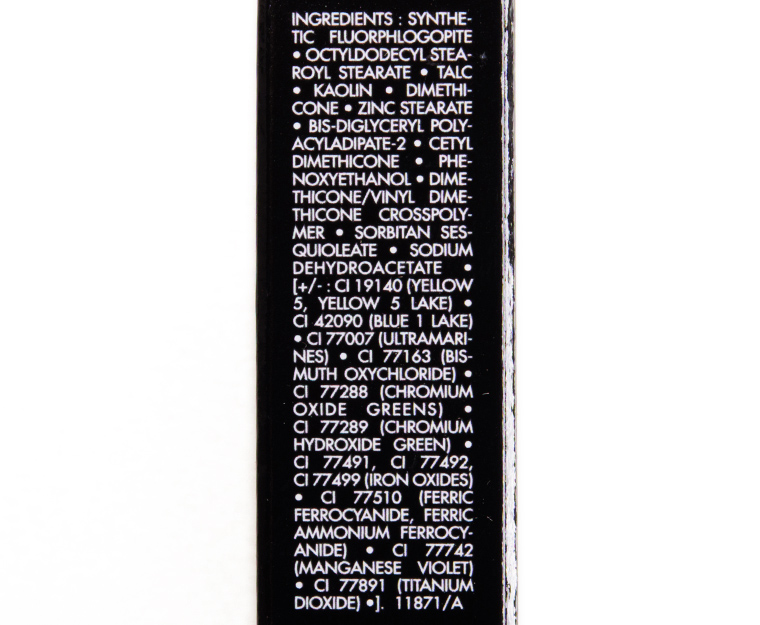


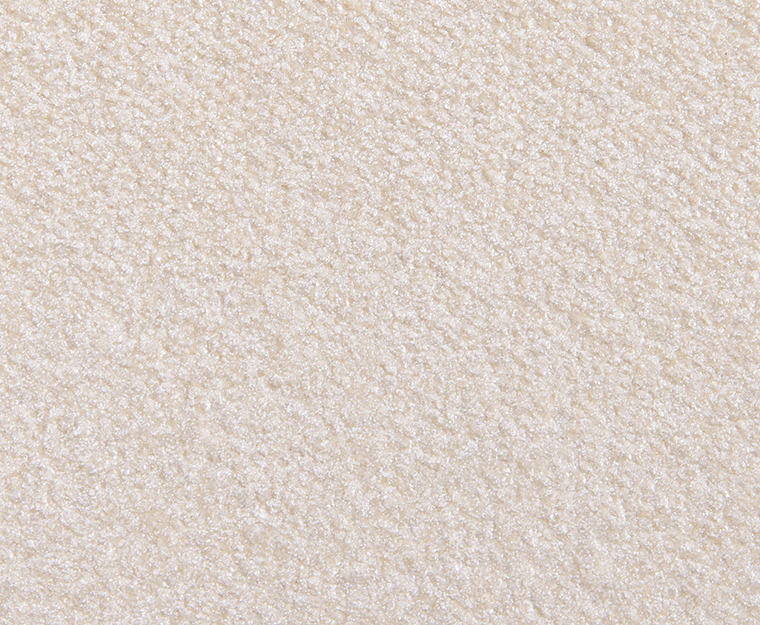

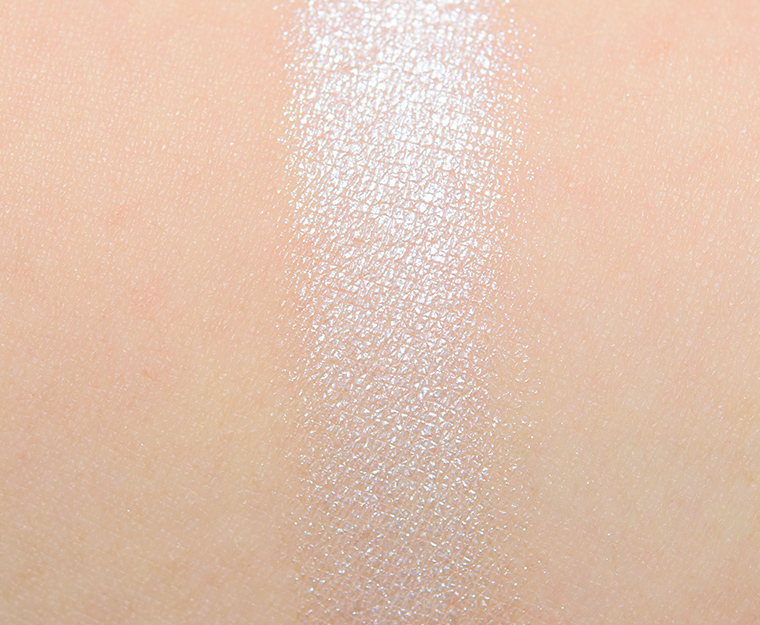
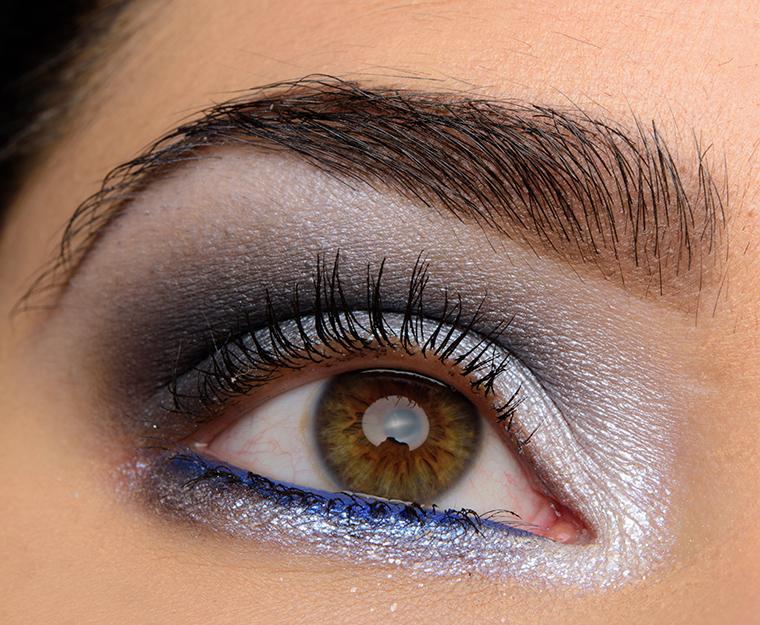
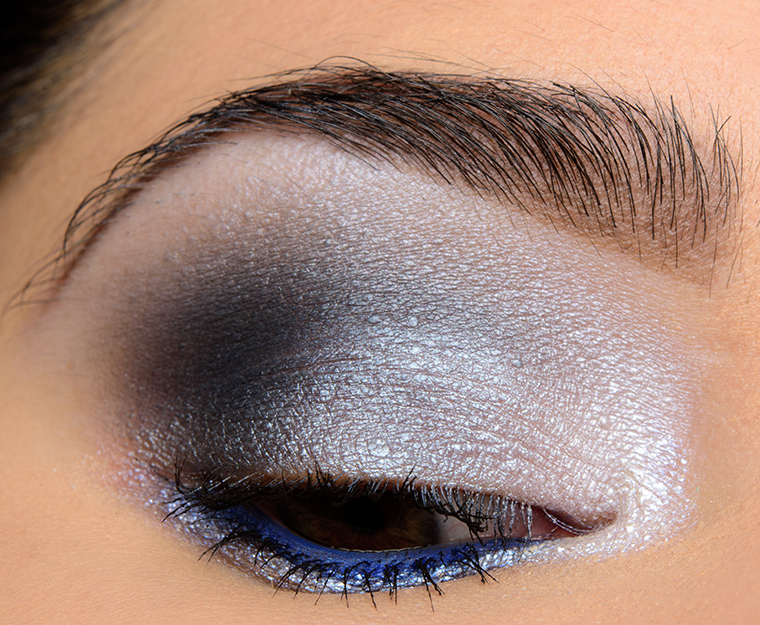









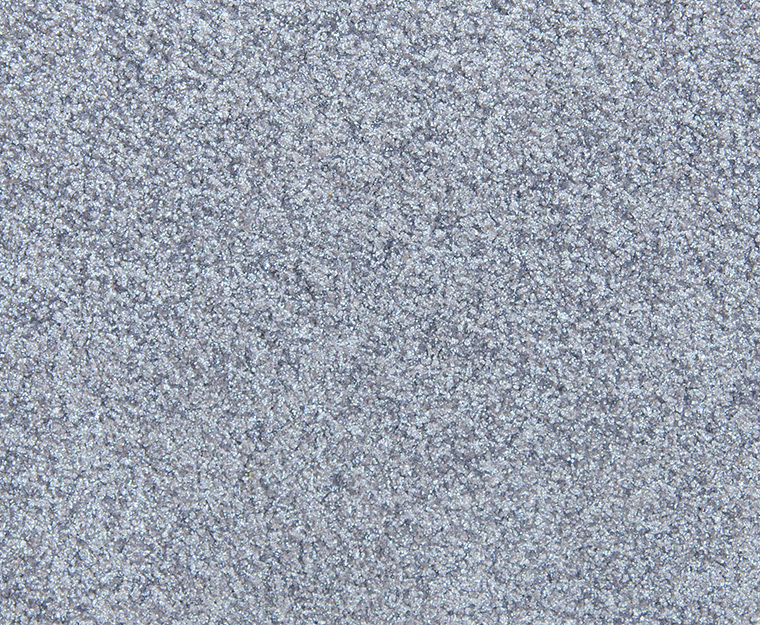
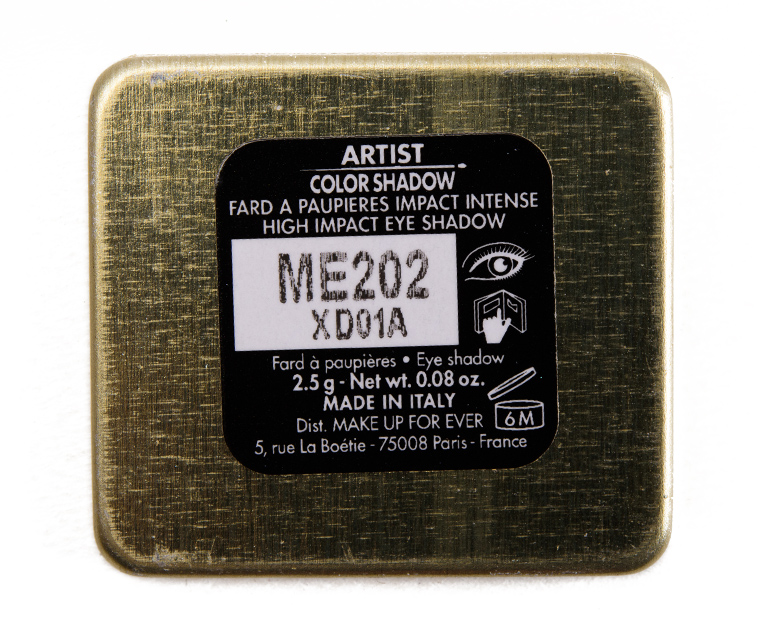
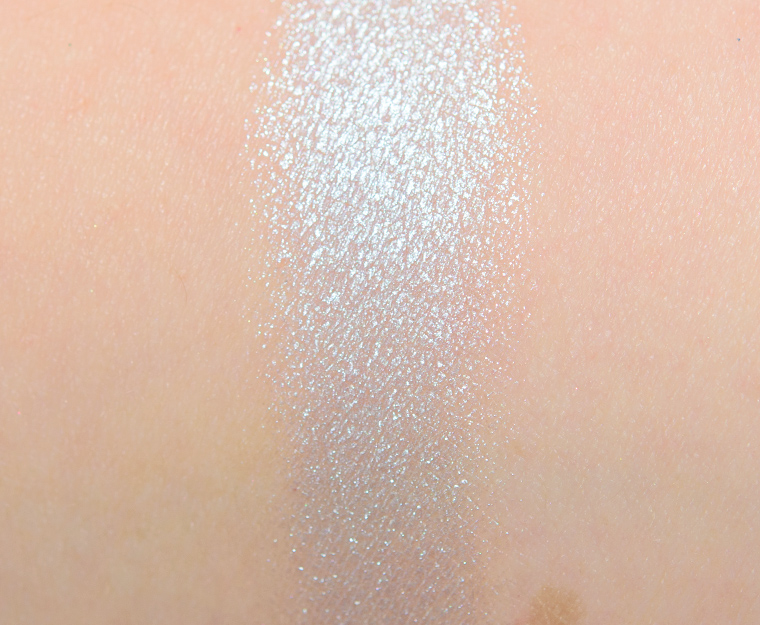






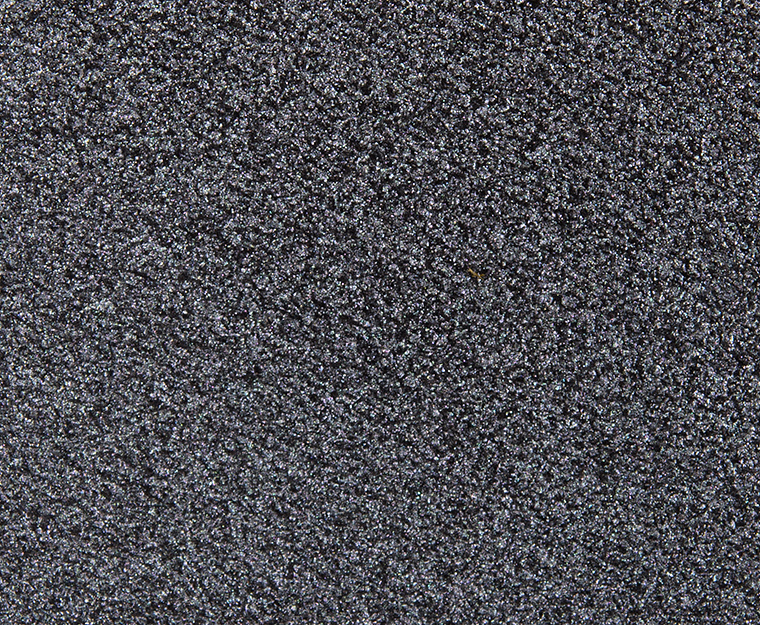
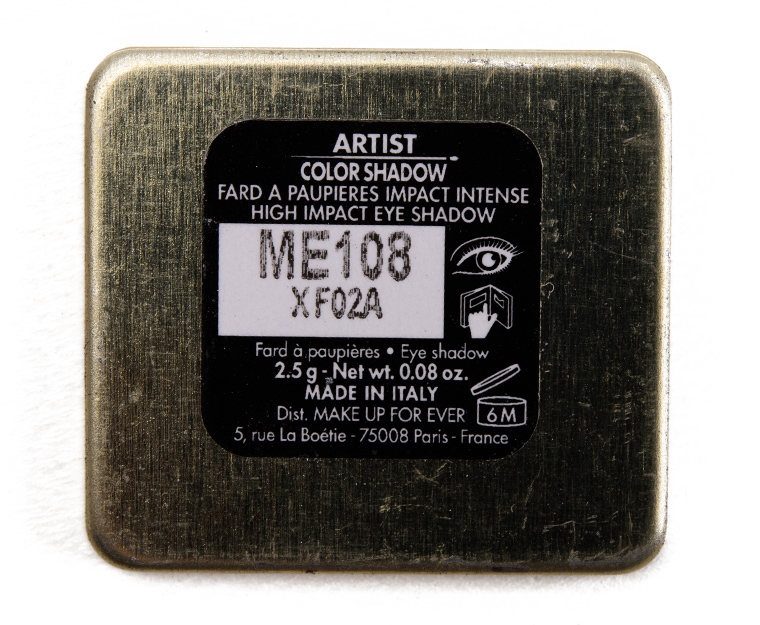
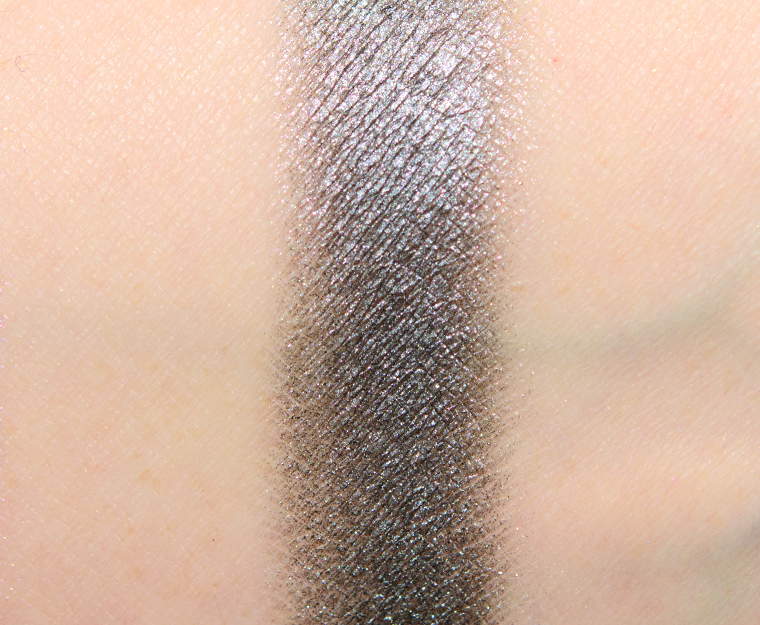






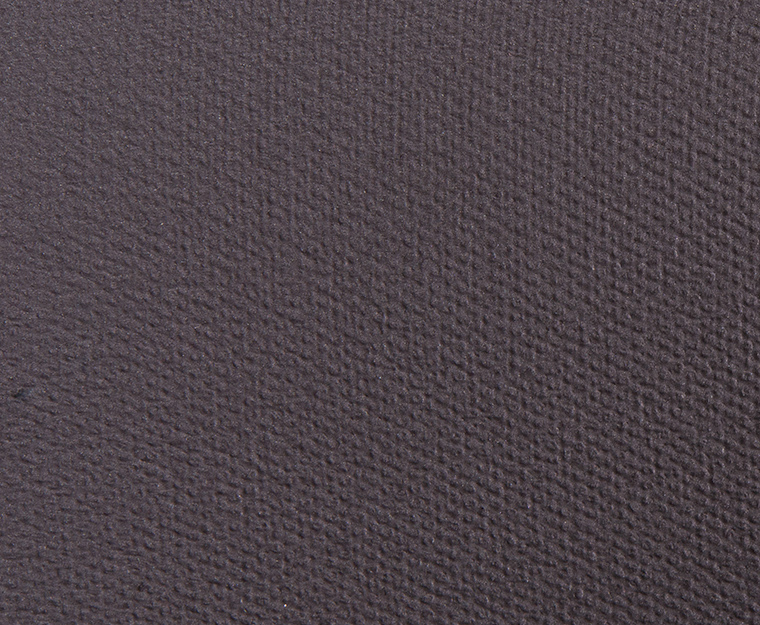
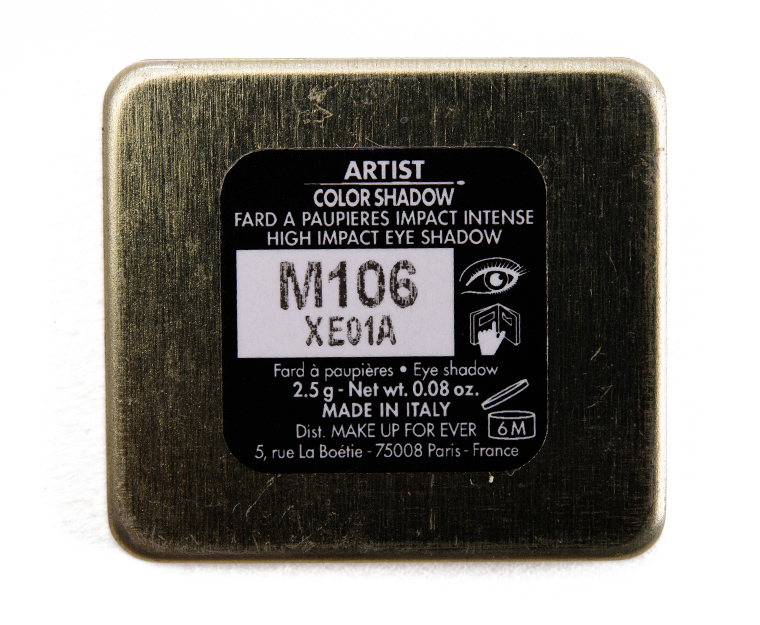
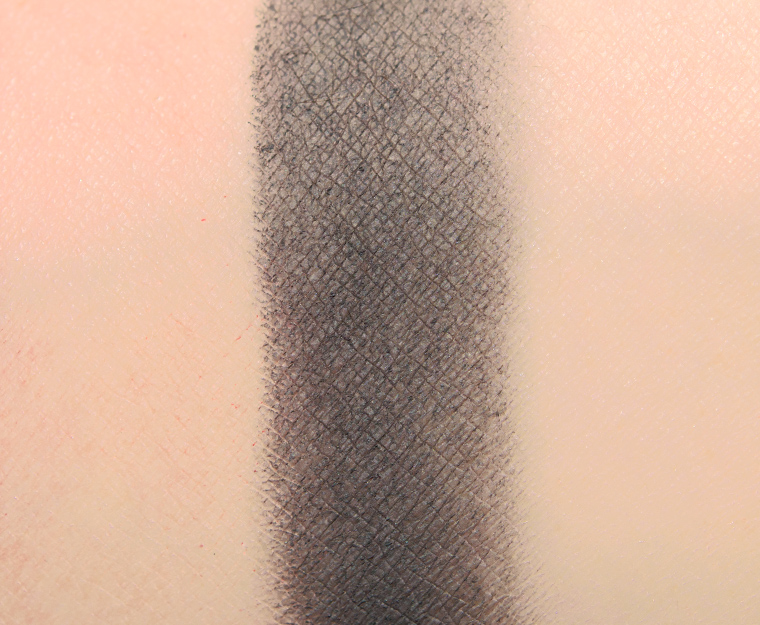

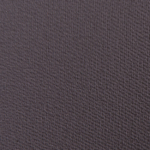
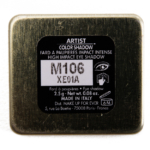

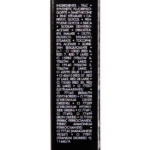

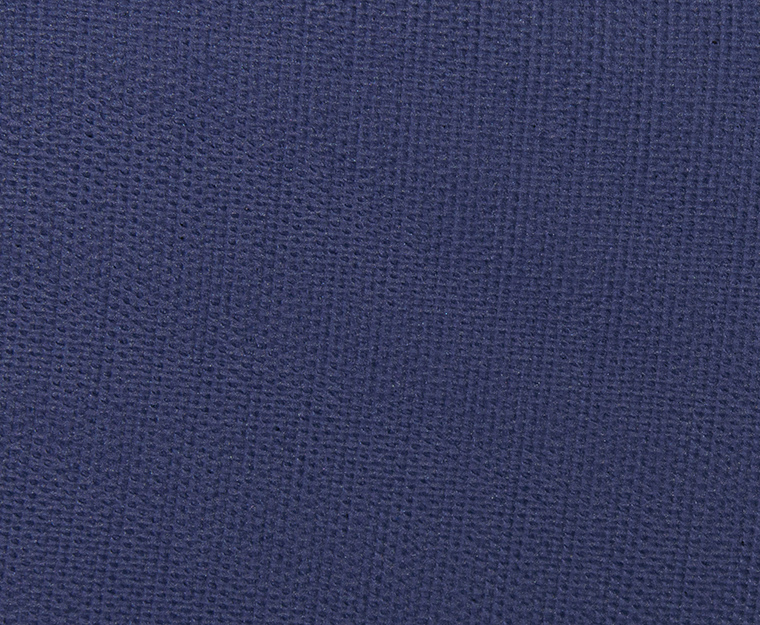
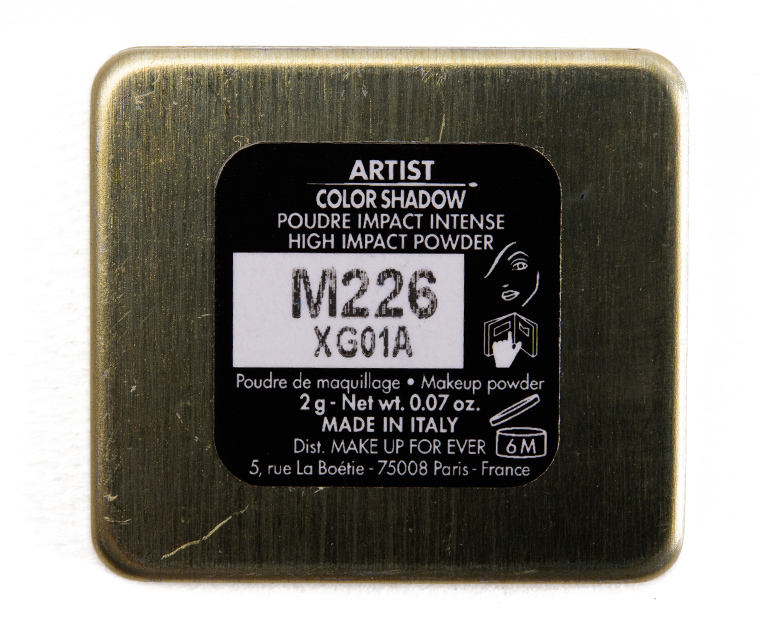
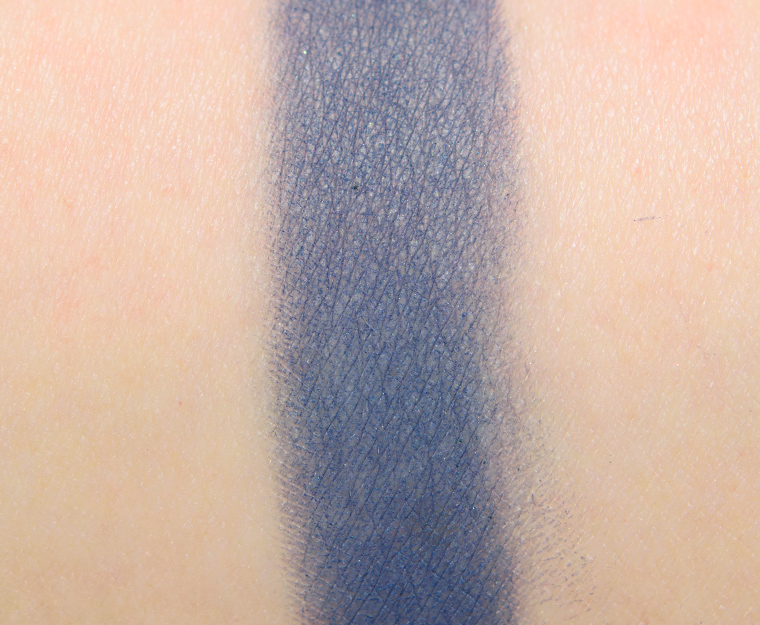






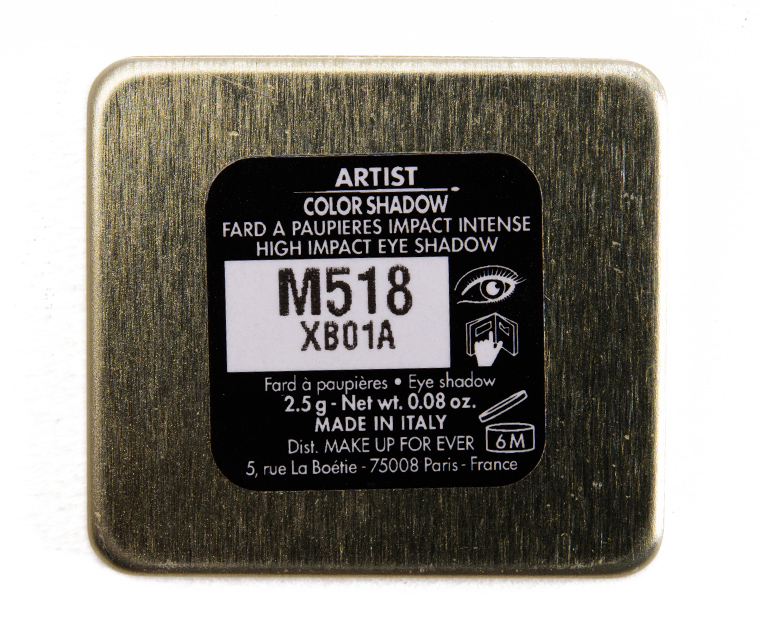
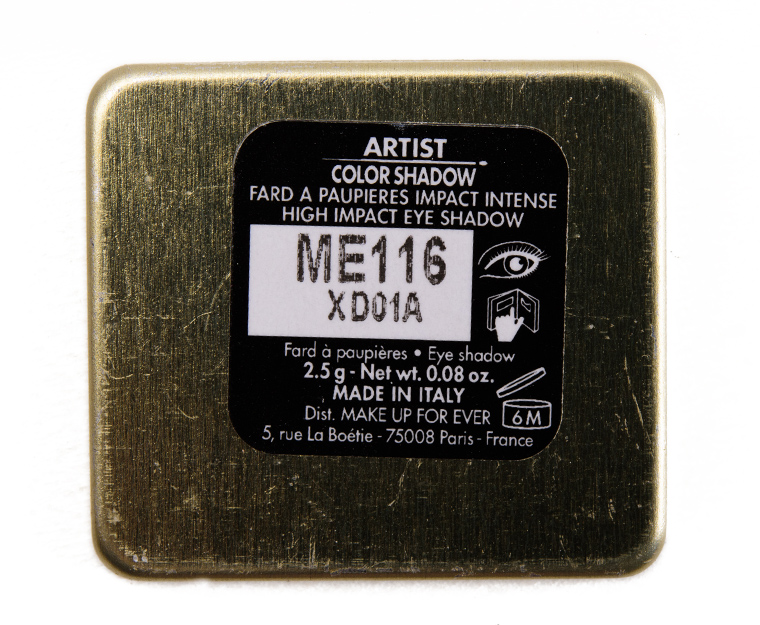
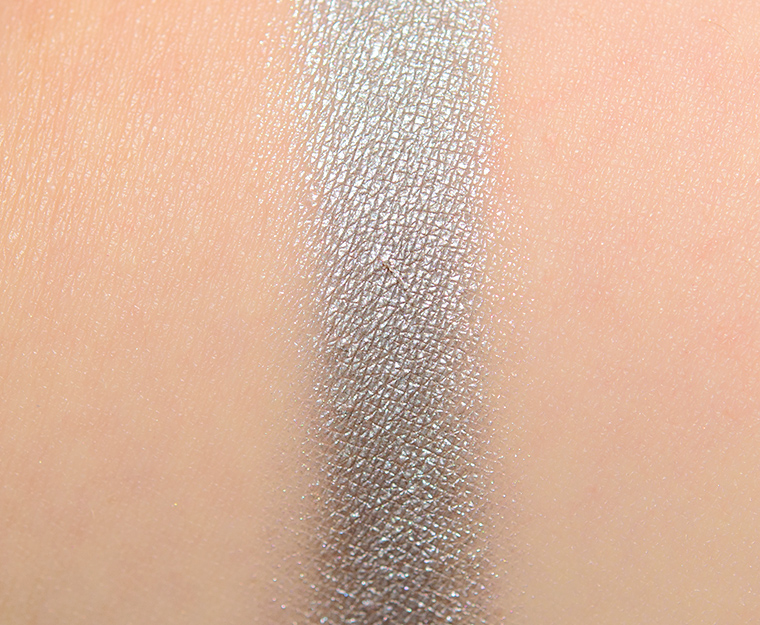






Great, great look, but glad I got most of what I need the first time around. How often we have to moan about how mufe fixed something that was the opposite of broken. These are very disappointing.
I don’t think I own any of these shades in the prior versions, but overall, the ratings of this new MUFE formula seems less than the prior. I don’t recall seeing this many B’s and C’s out of the previous formula. The mattes performed better overall.
These aren’t very impressive. I hate how they changed Abyssal Blue and Steel. They’re far less interesting now.
Even though you did manage to put together a lovely stormy gray and silver eye look, these shadows seem too fussy for me to deal with. Thank goodness I have Viseart Chroma for achieving something along those lines (but less bluish!)
I read it at first as ‘Abysmal Blue’ and to be honest I thought, ‘yeh, that makes sense’.
I always love a good cool toned grey, but I find these generally disappointing. The ratings just aren’t good enough to justify the price, especially when some of the BH Foil Eyes dupes are just as good, if not better (apart from the silver grey one). The mattes are really, very average.
Stunning eye look Christine.
Christina!!!! OMG!!! I stopped DEAD!!! GIRLFRIEND!! POP dem skills!! That is so beautiful! It’s not over the top like some of the looks I see – you really have your own personal touch — and girl …I’m telling you! WERK IT!!! OWN DAT!! LOL That liner is the bomb. Good for you. I love to see artists extend the creativity that they have and not follow the crowd. Whew. Amazing. Totally original!!